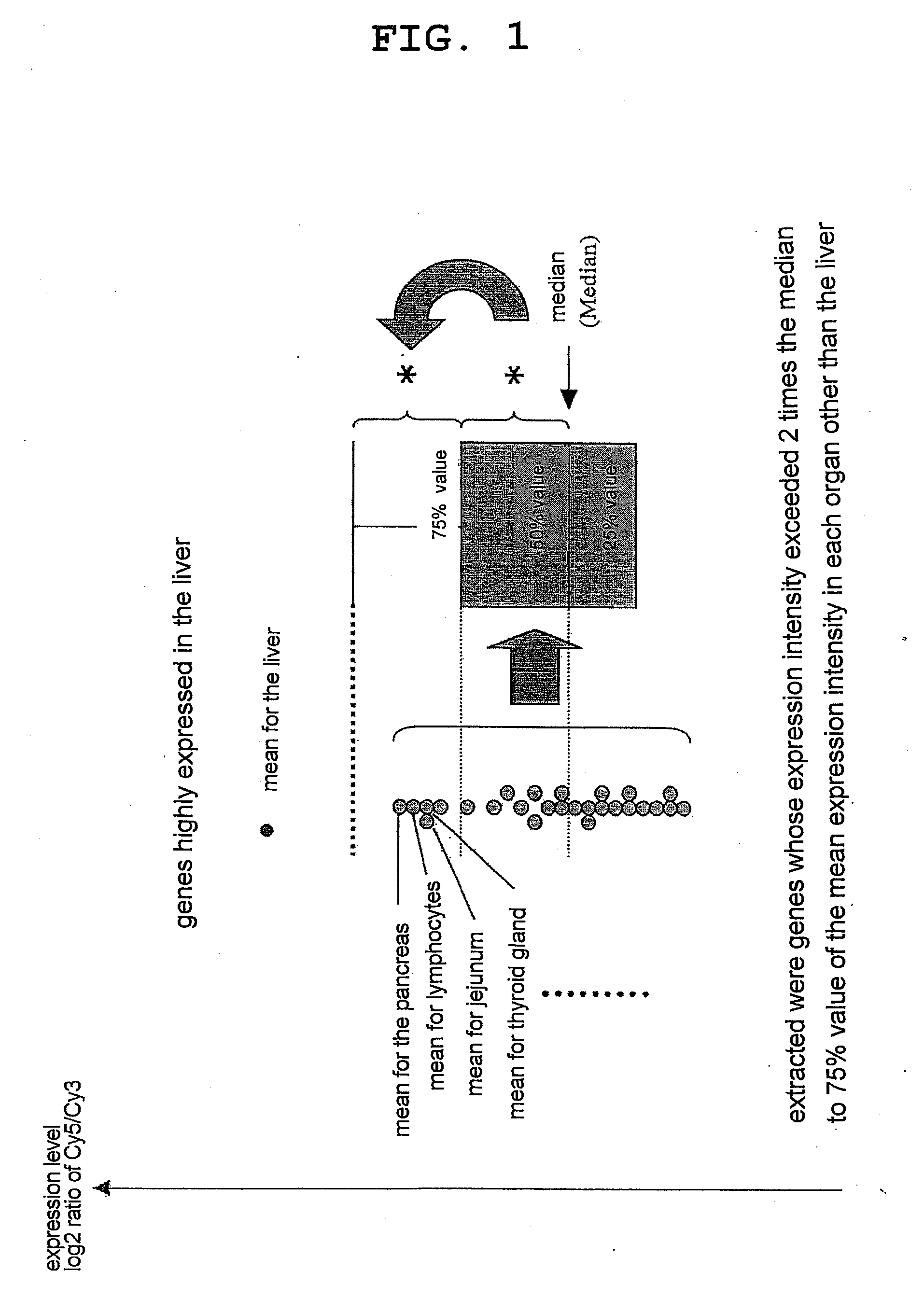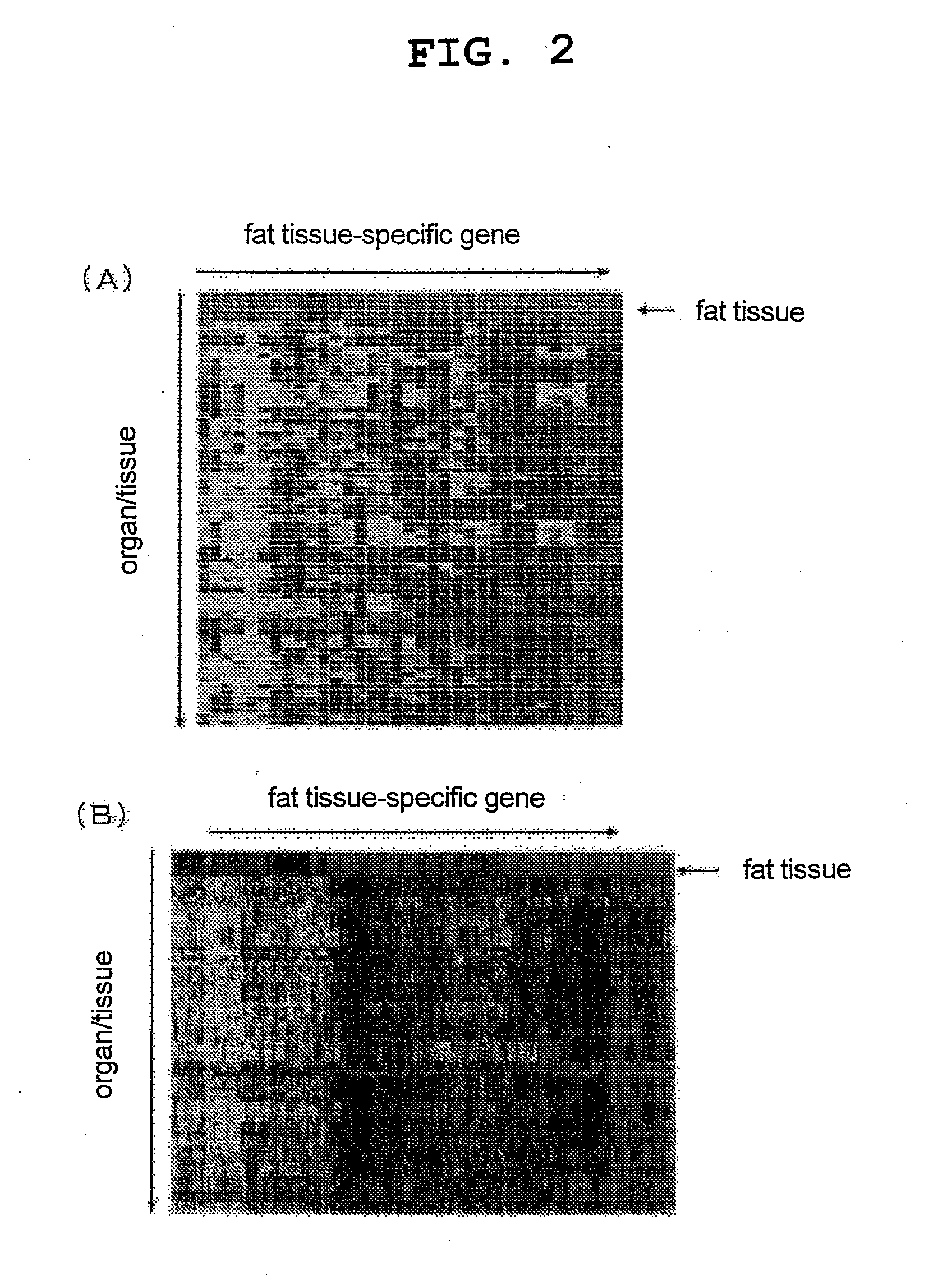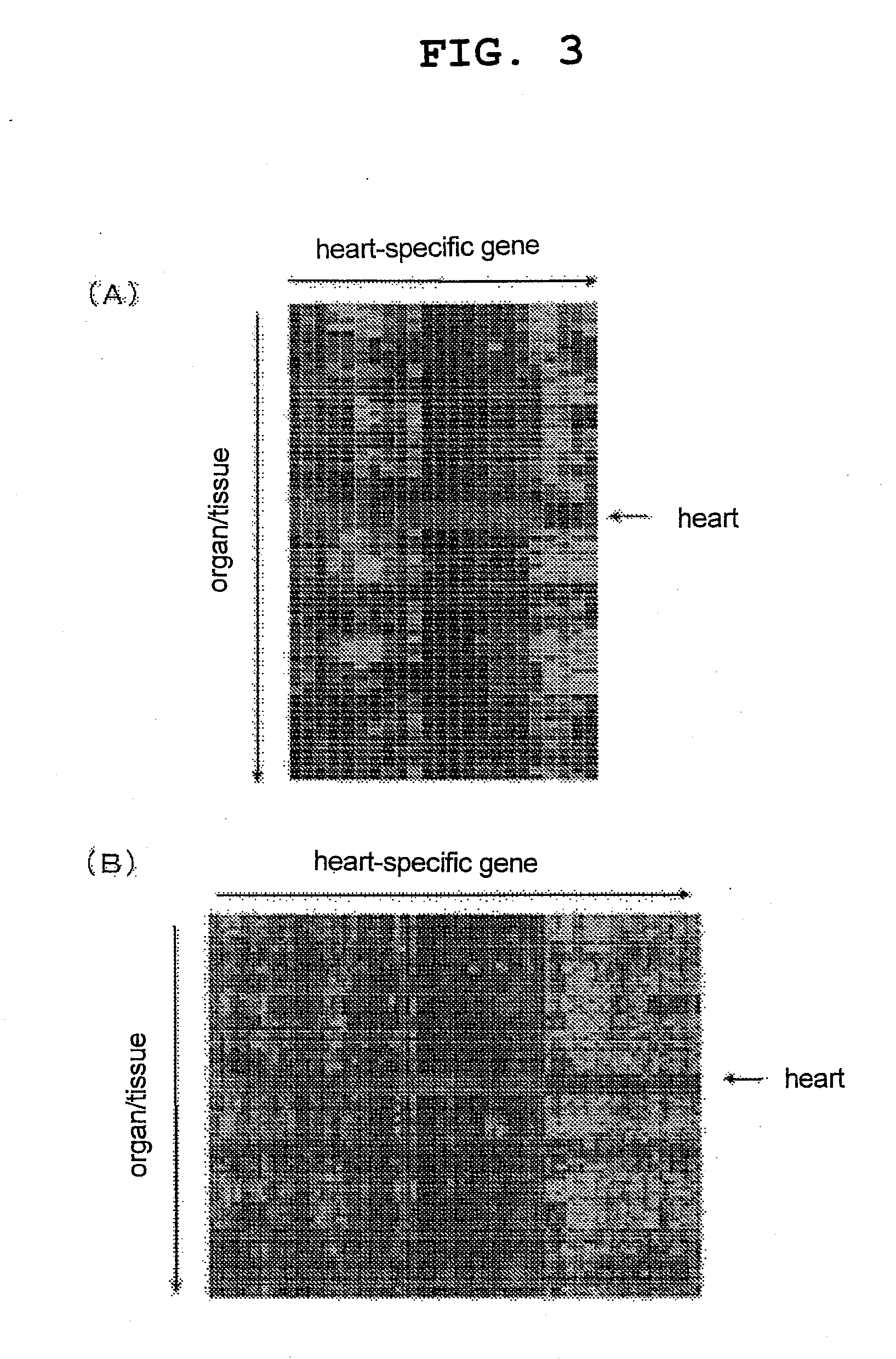Organ-specific gene, method for identifying the same and use thereof
a technology of organs and genes, applied in the field of organ-specific genes and methods for identifying the same, can solve the problems of large amount of compound required, inability to reflect toxicity in humans, and high cost of purchasing and maintaining laboratory animals
- Summary
- Abstract
- Description
- Claims
- Application Information
AI Technical Summary
Benefits of technology
Problems solved by technology
Method used
Image
Examples
example 1
Materials and Methods
1. Database Used and Method of Data Extraction
[0081]Gene expression data on male C57BL / 6 mice were extracted from BioExpress of Gene Logic on Apr. 21, 2006. The parameters used in the extraction are shown in Table 1. Mouse Genome 430 2.0 Array includes 45101 probe sets.
TABLE 1Parameter settings at time of extractionof C57BL / 6 mouse gene expression dataParameter setting inBioExpressParameterDonor SpeciesM. musculusStrainC57BL / 6GenderMaleChipsetMouse430_2(Affymetrix, Mouse Genome 4302.0 Array)AlgorithmMAS5.0 (Affymetrix)NormalizationAffymetrixGeneral Pathologic CategoryNormalIVT Labeling Protocol-Double BiotinMouse430_2
2. Method of Calculating Log-Ratio Values of the Gene Expression Data
[0082]The gene expression data extracted were subjected to a logarithmic conversion with the base 2 using the Avadis version 3.3 software program (manufactured by Strand Genomics). The mean of AFFX-GapdhMur / M32599—5_at, AFFX-GapdhMur / M32599_M_at, and AFFX-GapdhMur / M32599—3_at was s...
example 2
Comparison of Organ / Tissue Specificity with Specific Genes Obtained by Other Method of Extraction
[0086]The expression of the genes specific for various organs / tissues obtained in Example 1 and the expression of the organ / tissue-specific genes obtained by a method previously published by the present inventors (see the non-patent document 1 and FIG. 1) (Comparative Example) in various mouse organs / tissues were compared by generating heat maps. FIG. 2 shows a comparison of both for a fat tissue-specific gene group, FIG. 3 shows a comparison for a heart-specific gene group, FIG. 4 shows a comparison for a liver-specific gene group, FIG. 5 shows a comparison for a thymus-specific gene group, and FIG. 6 shows a comparison for a stomach-specific gene group (in all graphs, A represents the results from the gene groups obtained in Example 1, and B represents the results from the gene groups obtained in Comparative Example). For all organ / tissue-specific gene groups, almost all of the genes o...
example 3
Identification of Genes Highly Expressed Specifically in Combinations of Organs / Tissues
[0087]For the kidney (left), kidney (right), prostate and skeletal muscle, for which no specific highly expressed gene was identifiable in Example 1, an attempt was made to identify specific highly expressed genes using combinations with other organs / tissues. As a result, it was found that when the kidney (left) and the kidney (right) were combined, 66 probe sets were expressed specifically in the kidneys (left and right). For the prostate, it was found that when it was combined with the pancreas, 1 probe set was highly expressed specifically in the prostate / pancreas (Table 3). For skeletal muscle, an analysis was attempted after it was combined with the heart, which mainly consists of muscular tissue, or with the prostate, from which no specific gene was acquired when examined alone, but no specific highly expressed gene was acquired.
TABLE 3Numbers of genes highly expressed specificallyin combina...
PUM
| Property | Measurement | Unit |
|---|---|---|
| Center for Biotechnology Information Basic Local Alignment Search Tool | aaaaa | aaaaa |
| length | aaaaa | aaaaa |
| fluorescent | aaaaa | aaaaa |
Abstract
Description
Claims
Application Information
 Login to View More
Login to View More - R&D
- Intellectual Property
- Life Sciences
- Materials
- Tech Scout
- Unparalleled Data Quality
- Higher Quality Content
- 60% Fewer Hallucinations
Browse by: Latest US Patents, China's latest patents, Technical Efficacy Thesaurus, Application Domain, Technology Topic, Popular Technical Reports.
© 2025 PatSnap. All rights reserved.Legal|Privacy policy|Modern Slavery Act Transparency Statement|Sitemap|About US| Contact US: help@patsnap.com



